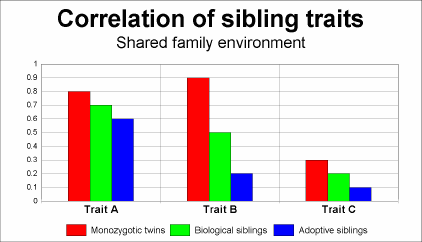Solipsism (/ˈsɒlɪpsɪzəm/ (![]() listen); from Latin solus, meaning 'alone', and ipse, meaning 'self') is the philosophical idea that only one's mind is sure to exist. As an epistemological position, solipsism holds that knowledge of anything outside one's own mind is unsure; the external world and other minds cannot be known and might not exist outside the mind.
listen); from Latin solus, meaning 'alone', and ipse, meaning 'self') is the philosophical idea that only one's mind is sure to exist. As an epistemological position, solipsism holds that knowledge of anything outside one's own mind is unsure; the external world and other minds cannot be known and might not exist outside the mind.
Varieties
There are varying degrees of solipsism that parallel the varying degrees of skepticism:
Metaphysical
Metaphysical solipsism is a variety of solipsism. Based on a philosophy of subjective idealism, metaphysical solipsists maintain that the self is the only existing reality and that all other realities, including the external world and other persons, are representations of that self, and have no independent existence. There are several versions of metaphysical solipsism, such as Caspar Hare's egocentric presentism (or perspectival realism), in which other people are conscious, but their experiences are simply not present.
Epistemological
Epistemological solipsism is the variety of idealism according to which only the directly accessible mental contents of the solipsistic philosopher can be known. The existence of an external world is regarded as an unresolvable question rather than actually false. Further, one cannot also be certain as to what extent the external world exists independently of one's mind. For instance, it may be that a God-like being controls the sensations received by one's brain, making it appear as if there is an external world when most of it (excluding the God-like being and oneself) is false. However, the point remains that epistemological solipsists consider this an "unresolvable" question.
Methodological
Methodological solipsism is an agnostic variant of solipsism. It exists in opposition to the strict epistemological requirements for "knowledge" (e.g. the requirement that knowledge must be certain). It still entertains the points that any induction is fallible. Methodological solipsism sometimes goes even further to say that even what we perceive as the brain is actually part of the external world, for it is only through our senses that we can see or feel the mind. Only the existence of thoughts is known for certain.
Methodological solipsists do not intend to conclude that the stronger forms of solipsism are actually true. They simply emphasize that justifications of an external world must be founded on indisputable facts about their own consciousness. The methodological solipsist believes that subjective impressions (empiricism) or innate knowledge (rationalism) are the sole possible or proper starting point for philosophical construction. Often methodological solipsism is not held as a belief system, but rather used as a thought experiment to assist skepticism (e.g. Descartes' Cartesian skepticism).
Main points
Denial of material existence, in itself, does not constitute solipsism.
A feature of the metaphysical solipsistic worldview is the denial of the existence of other minds. Since personal experiences are private and ineffable, another being's experience can be known only by analogy.
Philosophers try to build knowledge on more than an inference or analogy. The failure of Descartes' epistemological enterprise brought to popularity the idea that all certain knowledge may go no further than "I think; therefore I exist" without providing any real details about the nature of the "I" that has been proven to exist.
The theory of solipsism also merits close examination because it relates to three widely held philosophical presuppositions, each itself fundamental and wide-ranging in importance:
- My most certain knowledge is the content of my own mind—my thoughts, experiences, affects, etc.
- There is no conceptual or logically necessary link between mental and physical—between, say, the occurrence of certain conscious experience or mental states and the 'possession' and behavioral dispositions of a 'body' of a particular kind.
- The experience of a given person is necessarily private to that person.
To expand on the second point, the conceptual problem here is that the previous assumes mind or consciousness (which are attributes) can exist independent of some entity having this capability, i.e., that an attribute of an existent can exist apart from the existent itself. If one admits to the existence of an independent entity (e.g., the brain) having that attribute, the door is open. (See Brain in a vat)
Some people hold that, while it cannot be proven that anything independent of one's mind exists, the point that solipsism makes is irrelevant. This is because, whether the world as we perceive it exists independently or not, we cannot escape this perception (except via death), hence it is best to act assuming that the world is independent of our minds.
There is also the issue of plausibility to consider. If one is the only mind in existence, then one is maintaining that one's mind alone created all of which one is apparently aware. This includes the symphonies of Beethoven, the works of Shakespeare, all of mathematics and science (which one can access via one's phantom libraries), etc. Critics of solipsism find this somewhat implausible.
However, being aware simply acknowledges its existence; it does not identify the actual creations until they are observed by the user.
History
Gorgias
Solipsism was first recorded by the Greek presocratic sophist, Gorgias (c. 483–375 BC) who is quoted by the Roman sceptic Sextus Empiricus as having stated:
- Nothing exists.
- Even if something exists, nothing can be known about it.
- Even if something could be known about it, knowledge about it cannot be communicated to others.
Much of the point of the sophists was to show that "objective" knowledge was a literal impossibility.
Descartes
The foundations of solipsism are in turn the foundations of the view that the individual's understanding of any and all psychological concepts (thinking, willing, perceiving, etc.) is accomplished by making an analogy with his or her own mental states; i.e., by abstraction from inner experience. And this view, or some variant of it, has been influential in philosophy since Descartes elevated the search for incontrovertible certainty to the status of the primary goal of epistemology, whilst also elevating epistemology to "first philosophy".
Berkeley
George Berkeley's arguments against materialism in favour of idealism provide the solipsist with a number of arguments not found in Descartes. While Descartes defends ontological dualism, thus accepting the existence of a material world (res extensa) as well as immaterial minds (res cogitans) and God, Berkeley denies the existence of matter but not minds, of which God is one.
Relation to other ideas
Idealism and materialism
One of the most fundamental debates in philosophy concerns the "true" nature of the world—whether it is some ethereal plane of ideas or a reality of atomic particles and energy. Materialism posits a real 'world out there,' as well as in and through us, that can be sensed—seen, heard, tasted, touched and felt, sometimes with prosthetic technologies corresponding to human sensing organs. (Materialists do not claim that human senses or even their prosthetics can, even when collected, sense the totality of the 'universe'; simply that they collectively cannot sense what cannot in any way be known to us.)
Materialists do not find this a useful way of thinking about the ontology and ontogeny of ideas, but we might say that from a materialist perspective pushed to a logical extreme communicable to an idealist, ideas are ultimately reducible to a physically communicated, organically, socially and environmentally embedded 'brain state'. While reflexive existence is not considered by materialists to be experienced on the atomic level, the individual's physical and mental experiences are ultimately reducible to the unique tripartite combination of environmentally determined, genetically determined, and randomly determined interactions of firing neurons and atomic collisions.
For materialists, ideas have no primary reality as essences separate from our physical existence. From a materialist perspective, ideas are social (rather than purely biological), and formed and transmitted and modified through the interactions between social organisms and their social and physical environments. This materialist perspective informs scientific methodology, insofar as that methodology assumes that humans have no access to omniscience and that therefore human knowledge is an ongoing, collective enterprise that is best produced via scientific and logical conventions adjusted specifically for material human capacities and limitations.
Modern idealists believe that the mind and its thoughts are the only true things that exist. This is the reverse of what is sometimes called classical idealism or, somewhat confusingly, Platonic idealism due to the influence of Plato's theory of forms (εἶδος eidos or ἰδέα idea) which were not products of our thinking. The material world is ephemeral, but a perfect triangle or "beauty" is eternal. Religious thinking tends to be some form of idealism, as God usually becomes the highest ideal (such as neoplatonism). On this scale, solipsism can be classed as idealism. Thoughts and concepts are all that exist, and furthermore, only the solipsist's own thoughts and consciousness exist. The so-called "reality" is nothing more than an idea that the solipsist has (perhaps unconsciously) created.
Cartesian dualism
There is another option: the belief that both ideals and "reality" exist. Dualists commonly argue that the distinction between the mind (or 'ideas') and matter can be proven by employing Leibniz' principle of the identity of indiscernibles which states that if two things share exactly the same qualities, then they must be identical, as in indistinguishable from each other and therefore one and the same thing. Dualists then attempt to identify attributes of mind that are lacked by matter (such as privacy or intentionality) or vice versa (such as having a certain temperature or electrical charge). One notable application of the identity of indiscernibles was by René Descartes in his Meditations on First Philosophy. Descartes concluded that he could not doubt the existence of himself (the famous cogito ergo sum argument), but that he could doubt the (separate) existence of his body. From this, he inferred that the person Descartes must not be identical to the Descartes body since one possessed a characteristic that the other did not: namely, it could be known to exist. Solipsism agrees with Descartes in this aspect, and goes further: only things that can be known to exist for sure should be considered to exist. The Descartes body could only exist as an idea in the mind of the person Descartes. Descartes and dualism aim to prove the actual existence of reality as opposed to a phantom existence (as well as the existence of God in Descartes' case), using the realm of ideas merely as a starting point, but solipsism usually finds those further arguments unconvincing. The solipsist instead proposes that their own unconscious is the author of all seemingly "external" events from "reality".
Philosophy of Schopenhauer
The World as Will and Representation is the central work of Arthur Schopenhauer. Schopenhauer saw the human will as our one window to the world behind the representation, the Kantian thing-in-itself. He believed, therefore, that we could gain knowledge about the thing-in-itself, something Kant said was impossible, since the rest of the relationship between representation and thing-in-itself could be understood by analogy as the relationship between human will and human body.
Idealism
The idealist philosopher George Berkeley argued that physical objects do not exist independently of the mind that perceives them. An item truly exists only as long as it is observed; otherwise, it is not only meaningless but simply nonexistent. The observer and the observed are one. Berkeley does attempt to show things can and do exist apart from the human mind and our perception, but only because there is an all-encompassing Mind in which all "ideas" are perceived – in other words, God, who observes all. Solipsism agrees that nothing exists outside of perception, but would argue that Berkeley falls prey to the egocentric predicament – he can only make his own observations, and thus cannot be truly sure that this God or other people exist to observe "reality". The solipsist would say it is better to disregard the unreliable observations of alleged other people and rely upon the immediate certainty of one's own perceptions.
Rationalism
Rationalism is the philosophical position that truth is best discovered by the use of reasoning and logic rather than by the use of the senses (see Plato's theory of Forms). Solipsism is also skeptical of sense-data.
Philosophical zombie
The theory of solipsism crosses over with the theory of the philosophical zombie in that all other seemingly conscious beings actually lack true consciousness, instead they only display traits of consciousness to the observer, who is the only conscious being there is.
Falsifiability and testability
Solipsism is not a falsifiable hypothesis as described by Karl Popper: there does not seem to be an imaginable disproof.
One critical test is nevertheless to consider the induction from experience that the externally observable world does not seem, at first approach, to be directly manipulable purely by mental energies alone. One can indirectly manipulate the world through the medium of the physical body, but it seems impossible to do so through pure thought (e.g. via psychokinesis). It might be argued that if the external world were merely a construct of a single consciousness, i.e. the self, it could then follow that the external world should be somehow directly manipulable by that consciousness, and if it is not, then solipsism is false. An argument against this states the notion that such manipulation may be possible but barred from the conscious self via the subconscious self, a 'locked' portion of the mind that is still nevertheless the same mind. Lucid dreaming might be considered an example of when these locked portions of the subconscious become accessible. An argument against this might be brought up in asking why the subconscious mind would be locked. Also, the access to the autonomous ("locked") portions of the mind during the lucid dreaming is obviously much different (for instance: is relatively more transient) than the access to autonomous regions of the perceived nature.
The method of the typical scientist is materialist: they first assume that the external world exists and can be known. But the scientific method, in the sense of a predict-observe-modify loop, does not require the assumption of an external world. A solipsist may perform a psychological test on themselves, to discern the nature of the reality in their mind – however David Deutsch uses this fact to counter-argue: "outer parts" of solipsist, behave independently so they are independent for "narrowly" defined (conscious) self. A solipsist's investigations may not be proper science, however, since it would not include the co-operative and communitarian aspects of scientific inquiry that normally serve to diminish bias.
Minimalism
Solipsism is a form of logical minimalism. Many people are intuitively unconvinced of the nonexistence of the external world from the basic arguments of solipsism, but a solid proof of its existence is not available at present. The central assertion of solipsism rests on the nonexistence of such a proof, and strong solipsism (as opposed to weak solipsism) asserts that no such proof can be made. In this sense, solipsism is logically related to agnosticism in religion: the distinction between believing you do not know, and believing you could not have known.
However, minimality (or parsimony) is not the only logical virtue. A common misapprehension of Occam's razor has it that the simpler theory is always the best. In fact, the principle is that the simpler of two theories of equal explanatory power is to be preferred. In other words: additional "entities" can pay their way with enhanced explanatory power. So the realist can claim that, while his world view is more complex, it is more satisfying as an explanation.
Solipsism in infants
Some developmental psychologists believe that infants are solipsistic, and that eventually children infer that others have experiences much like theirs and reject solipsism.
Hinduism
The earliest reference to Solipsism may be imputed to a mistaken notion of the ideas in Hindu philosophy in the Brihadaranyaka Upanishad, dated to early 1st millennium BCE. The Upanishad holds the mind to be the only god and all actions in the universe are thought to be a result of the mind assuming infinite forms. After the development of distinct schools of Indian philosophy, Advaita Vedanta and Samkhya schools are thought to have originated concepts similar to solipsism. Actually, Brihadaranyaka (1.3.) mentions 'Prana', which is what the true meaning is of the ancient Greek 'Psyche'. Again, in the 4th chapter of the Brihadaranyaka it is called 'Atma' which is described as the 'jyotih purusha'(4.3.7.). None of these ideas being translatable as Mind, it seems that the Brihadaranyaka itself bears ample testimony to the fact that Hinduism did not preach any form of solipsism.
Advaita Vedanta
Advaita is one of the six most known Hindu philosophical systems and literally means "non-duality". Its first great consolidator was Adi Shankaracharya, who continued the work of some of the Upanishadic teachers, and that of his teacher's teacher Gaudapada. By using various arguments, such as the analysis of the three states of experience—wakefulness, dream, and deep sleep, he established the singular reality of Brahman, in which Brahman, the universe and the Atman or the Self, were one and the same.
One who sees everything as nothing but the Self, and the Self in everything one sees, such a seer withdraws from nothing. For the enlightened, all that exists is nothing but the Self, so how could any suffering or delusion continue for those who know this oneness?
— Ishopanishad: sloka 6, 7
The concept of the Self in the philosophy of Advaita could be interpreted as solipsism. However, the transhuman, theological implications of the Self in Advaita protect it from true solipsism as found in the west. Similarly, the Vedantic text Yogavasistha, escapes charge of solipsism because the real "I" is thought to be nothing but the absolute whole looked at through a particular unique point of interest.
Advaita is also thought to strongly diverge from solipsism in that, the former is a system of exploration of one's mind in order to finally understand the nature of the self and attain complete knowledge. The unity of existence is said to be directly experienced and understood at the end as a part of complete knowledge. On the other hand, solipsism posits the non-existence of the external world right at the beginning, and says that no further inquiry is possible.
Samkhya and Yoga
Samkhya philosophy, which is sometimes seen as the basis of Yogic thought, adopts a view that matter exists independently of individual minds. Representation of an object in an individual mind is held to be a mental approximation of the object in the external world. Therefore, Samkhya chooses representational realism over epistemological solipsism. Having established this distinction between the external world and the mind, Samkhya posits the existence of two metaphysical realities Prakriti (matter) and Purusha (consciousness).
Buddhism
Some interpretations of Buddhism assert that external reality is an illusion, and sometimes this position is [mis]understood as metaphysical solipsism. Buddhist philosophy, though, generally holds that the mind and external phenomena are both equally transient, and that they arise from each other. The mind cannot exist without external phenomena, nor can external phenomena exist without the mind. This relation is known as "dependent arising" (pratityasamutpada).
The Buddha stated, "Within this fathom long body is the world, the origin of the world, the cessation of the world and the path leading to the cessation of the world". Whilst not rejecting the occurrence of external phenomena, the Buddha focused on the illusion created within the mind of the perceiver by the process of ascribing permanence to impermanent phenomena, satisfaction to unsatisfying experiences, and a sense of reality to things that were effectively insubstantial.
Mahayana Buddhism also challenges the illusion of the idea that one can experience an 'objective' reality independent of individual perceiving minds.
From the standpoint of Prasangika (a branch of Madhyamaka thought), external objects do exist, but are devoid of any type of inherent identity: "Just as objects of mind do not exist [inherently], mind also does not exist [inherently]". In other words, even though a chair may physically exist, individuals can only experience it through the medium of their own mind, each with their own literal point of view. Therefore, an independent, purely 'objective' reality could never be experienced.
The Yogacara (sometimes translated as "Mind only") school of Buddhist philosophy contends that all human experience is constructed by mind. Some later representatives of one Yogacara subschool (Prajnakaragupta, Ratnakīrti) propounded a form of idealism that has been interpreted as solipsism. A view of this sort is contained in the 11th-century treatise of Ratnakirti, "Refutation of the existence of other minds" (Santanantara dusana), which provides a philosophical refutation of external mind-streams from the Buddhist standpoint of ultimate truth (as distinct from the perspective of everyday reality).
In addition to this, the Bardo Thodol, Tibet's famous book of the dead, repeatedly states that all of reality is a figment of one's perception, although this occurs within the "Bardo" realm (post-mortem). For instance, within the sixth part of the section titled "The Root Verses of the Six Bardos", there appears the following line: "May I recognize whatever appeareth as being mine own thought-forms"; there are many lines in similar ideal.






